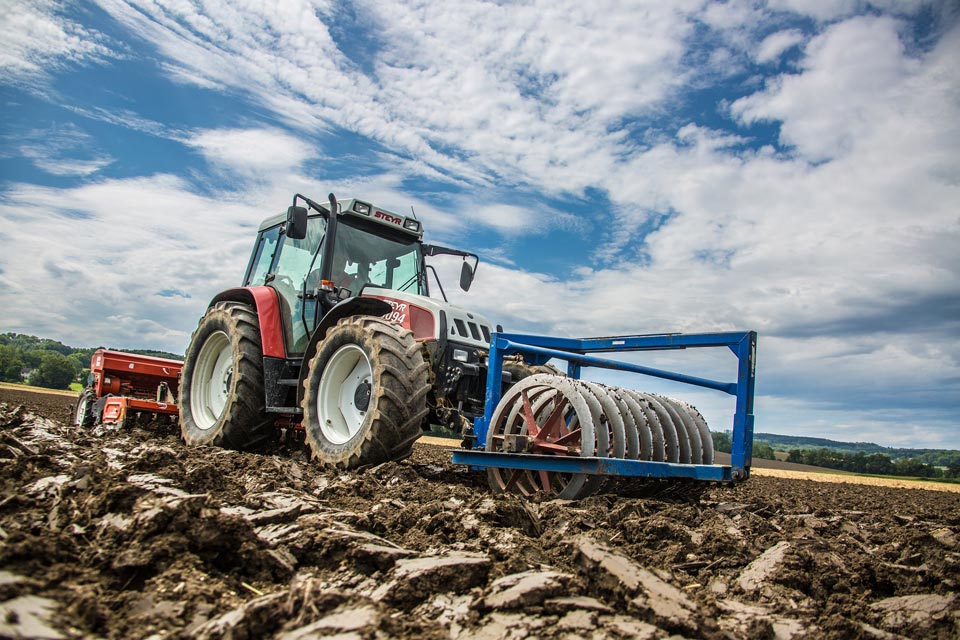Context
Optimising the use of agricultural machinery is a major line of research for CRA-W’s U8. The numerous trials carried out in the field and at the laboratory (on the standardised tractor test bench, in particular) have produced considerable know-how. The unit has worked in particular on two projects (Efficient 20 and Optenerges) aimed at reducing the energy consumption of some pilot groups of farmers. The influence of the fuel factor on their activities was found to be a growing concern. On the other hand, the results currently available for fuel consumption do not readily transfer to agriculture in their present state.
This project therefore aims to provide targeted answers and to help optimise fuel use in Wallonia’s agricultural mechanisation in order to meet Europe’s energy targets by trialling a system for monitoring and analysing fuel as an input.
According to initial estimates from the Efficient20 project, it should be possible to reduce agricultural tractors’ fuel consumption by about 20% by adopting an appropriate driving style. However, the small amount of research that has been done into consumption looks at a limited number of parameters and the results are rarely comparable. Most of the tractor work to date has not yet been studied.
The boom in CAN bus (Controller Area Network) technology and its standardisation on medium to high power tractors provides a substantial data pool on consumption and the influencing parameters. However, it has not yet been developed by research.
Linking CAN bus data with GPS technology is expected to open up fresh prospects for interpretation and spatialisation. It would also enable data to be contextualised (total consumption for a given type of crop, for example, or mapping engine load over a plot of land) for more in-depth analysis.
It thus appears that technical solutions are available which when linked with ITC (Information and Communication Technology) concepts will overcome the shortcomings of previous studies.
Objectives
In view of the rising price of fuel coupled with increasing mechanisation of Wallonia’s agriculture, sector players regard reducing fuel consumption as a key lever in maintaining margins and competitiveness while at the same time heeding environmental considerations. The heterogeneousness and inherent complexity of agriculture make any study of fuel consumption very complicated. Furthermore, the scant regard paid to energy within the sector has resulted in deficient knowledge of this factor and failure to question the status quo. Researchers and advisors are short of technical answers to provide effective support to the region’s agriculture. This project sets out to convert tractors into laboratories and data gathering tools with the aid of technological progress, namely CAN bus and GPS. Analysis of the data collected will make it possible to meet the sector’s expectations, such as characterising consumption at different levels (farm, machinery combinations, etc.), and to produce suitable effective strategies for cutting fuel consumption.
During this first two-year period the data acquisition system and the analytical protocol will be developed, calibrated and validated.
Description of tasks
WP1: Developing the state of the art
Literature reviews are still to be performed in order to develop the study of the various CAN bus TPMS. Special attention will be paid to the format, number and type of data output, their accuracy and the transmission protocol in order to assess the homogeneousness and improve the compatibility of the systems.
WP2: Indicator selection and measurement
The word ‘indicator’ covers the set of parameters that impact directly or indirectly on consumption and can be used to study its variability.
The most relevant indicators will be inventoried on the basis of the literature by analysing the most satisfactory consumption calculation models, international references and the scientific bibliography and also on the basis of results already obtained on the CRA-W engine test bench. The technical restrictions on obtaining indicators will be supplied within WP1.
An indicator acquisition system will be developed for two modern tractors by optimising the use of the CAN bus output and adding a GPS antenna.
The accuracy of indicator measurement will be checked and calibrated if appropriate.
The output data will be compared with measurements made using existing benchmark methods. As a practical aspect, some of the measurements will be calibrated on the test bench.
WP3: Developing the data transfer and analysis chain
Before the measurements can be used they must go through a succession of processes involving recording, transfer, storage, reading, validation and segregation. Special attention will be paid to standardising the data with a view to rolling out the system to more tractors.
Among other things, this involves developing a module for recording and transferring CAN bus output data.
The database, supplied with tractor measurements (CAN bus, sensors, GPS) and external data such as the type of farm or plot, will be built using Access architecture to enable the data to be interconnected.
WP4: Validation of the acquisition, transfer and analytical system
The system developed will be tested in a controlled situation using two specially equipped tractors. This will involve assessing its ability to acquire indicators in contrasting situations, in tests of increasing complexity, up to actual applications on a farm.
Expected results
The aim of the project is to look at ways of improving the energy efficiency of agricultural tractors by exploiting data generated automatically (irrespective of the activity) by on-board measuring systems and available as CAN bus output.
During this first two-year period the data acquisition system and the analytical protocol will be developed, calibrated and validated:
- Synthesis of on-board measuring systems
- Review of indicators impacting on consumption
- Measurement calibration protocol
- Recording system, database and data processing tool
- Validation of system under controlled conditions
Contribution
CRA-W’s Farming Systems, Territories and Information Technologies Unit will apply its expertise to developing the database. Close cooperation with the Soil Fertility and Water Protection Unit, which is in charge of CRA-W’s experimental facility and the related agricultural machinery, will be ensured to enable the measuring system to be installed on the tractors and the tests and trials to be carried out.
Throughout the project exchanges of experiences will take place with the Brittany Chambers of Agriculture and Gembloux Agro Bio-Tech, who have acquired know-how in using tractors as data gathering tools.
Exchange of information with agricultural tractor importers and dealers will also form part of the project.
Funding
- DGARNE



